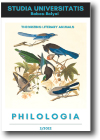THE CHAMELEON’S BLUSH AND THE POETIC IMAGINATION FROM SHAKESPEARE TO KEATS
THE CHAMELEON’S BLUSH AND THE POETIC IMAGINATION FROM SHAKESPEARE TO KEATS
Author(s): Jonathan P. A. SellSubject(s): British Literature
Published by: Studia Universitatis Babes-Bolyai
Keywords: imagination; chameleon; William Shakespeare; John Keats; blush;
Summary/Abstract: The Chameleon’s Blush and the Poetic Imagination from Shakespeare to Keats. When English Romantic poet John Keats likened William Shakespeare to a chameleon, far from being original, he was tapping into a venerable tradition of drawing analogies between human beings and the colour-changing reptile. In literary criticism, the analogy is usually taken to refer to poetic indeterminacy; in sociopsychology, to conscious or unconscious, opportunistic versatility of identity. This study traces the evolution of the polyvalent chameleon trope from the zoological treatises of antiquity, through wonder literature and Renaissance and early modern works on psychology and witchcraft, to Shakespeare’s plays. It shows more specifically how the chameleon came to acquire an imagination and how that imagination was, on the one hand, instrumental in prompting the sort of inter-subjective absorption Keats emblematised in the blush, and, on the other, projective in a sense akin to Hazlitt’s own theory of the imagination. As a result, new light is thrown not only onto specific features of Shakespeare’s art and Romantic poetics, but also onto past conceptions of the imagination and the generative role of zoological analogy in their formulations.
Journal: Studia Universitatis Babes-Bolyai - Philologia
- Issue Year: 67/2022
- Issue No: 2
- Page Range: 251-270
- Page Count: 20
- Language: English

